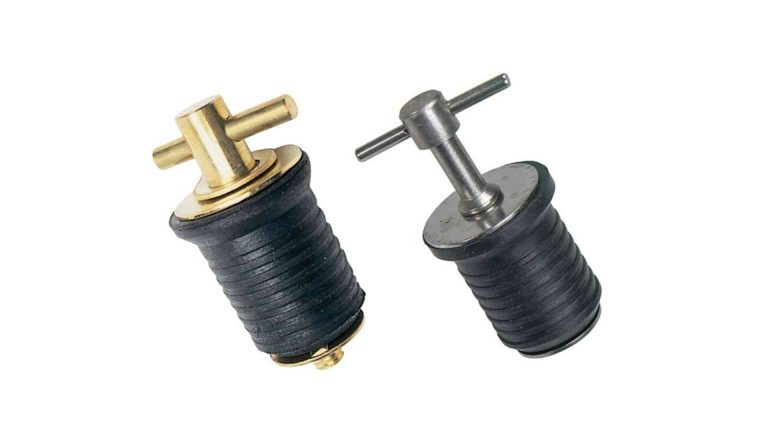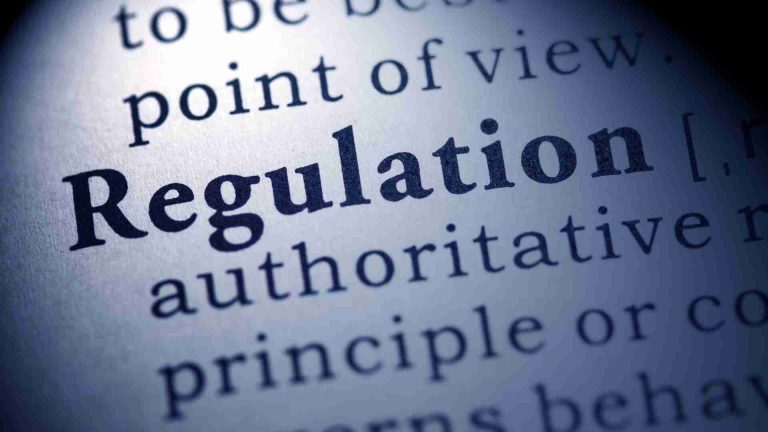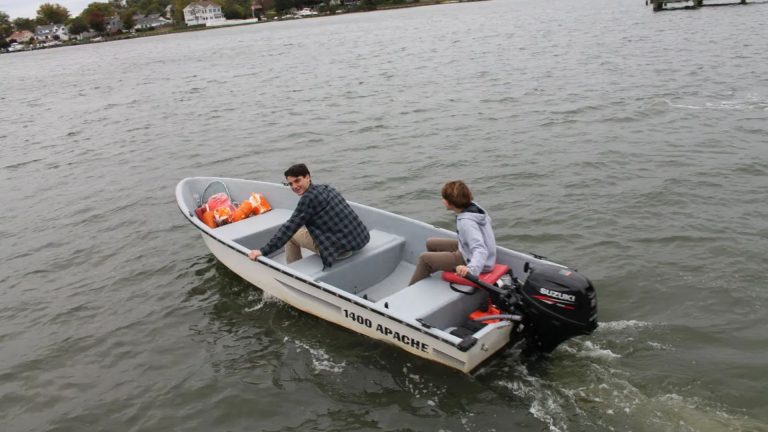5 Symptoms to Detect a Bad Reed Valve on Your Boat: Guide
Picture this: you’re gliding across the water, the engine roaring with power, and the boat cutting through the waves effortlessly. Behind this impressive performance lies a critical component that often goes unnoticed – the reed valves in your boat’s engine. These small but mighty valves play a vital role in regulating the flow of air and fuel mixture, directly impacting your boat’s performance and efficiency.
But what happens when these reed valves start to malfunction? Performance issues may arise, leaving you scratching your head, trying to figure out the cause. Recognizing the symptoms of a faulty reed valve is crucial for timely diagnosis and repair, ensuring that your boat continues to run smoothly on the water.
Welcome to this comprehensive guide, where we delve into the world of reed valves and explore the telltale signs of a bad reed valve. Whether you’re a seasoned boat owner or a newbie to the watercraft world, understanding these symptoms can save you from potential headaches and keep your boat’s engine in top-notch condition. So, let’s dive in and discover all there is to know about bad reed valve symptoms and how to address any potential issues.
Overview of Reed Valves and Their Significance in Two-Stroke Boat Engines

Reed valves are crucial components in two-stroke boat engines, responsible for controlling the flow of air and fuel mixture into the engine’s combustion chamber. Unlike four-stroke engines that have intake and exhaust valves, two-stroke engines use reed valves to manage the intake process.
The design of reed valves is relatively simple yet highly effective. They consist of thin, flexible metal or composite petals (reeds) mounted on a valve block. When the engine’s piston moves down during the intake stroke, it creates a vacuum that pulls the reed valves open, allowing the air-fuel mixture to enter the combustion chamber. Once the intake stroke is complete, the pressure inside the combustion chamber closes the reed valves, preventing the mixture from escaping.
This process ensures that the engine receives the right amount of air and fuel for combustion, optimizing efficiency and power output. Reed valves play a critical role in maintaining a proper fuel-air ratio, contributing to smoother acceleration, higher performance, and overall engine reliability. Understanding the functioning of reed valves is essential for recognizing and addressing potential issues that may arise over time.
Common Symptoms That May Indicate a Faulty Reed Valve in a Boat’s Engine
Recognizing the symptoms of a bad reed valve in a boat’s engine is crucial for addressing potential issues promptly. Some common symptoms of a faulty reed valve include:
- Poor Performance: A bad reed valve can disrupt the proper flow of air and fuel into the combustion chamber, leading to a decrease in engine performance. The boat may experience reduced acceleration, sluggishness, and a noticeable loss of power.
- Rough Idle: A faulty reed valve can cause the engine to idle roughly or inconsistently. You may notice unusual vibrations or hear irregular sounds when the boat is at rest.
- Difficulty Starting: Reed valves that are not functioning correctly can impact the engine’s ability to start smoothly. The boat may require several attempts to start, or it may not start at all.
- Increased Fuel Consumption: When the reed valves are not sealing properly, the engine may draw in excess fuel, leading to higher fuel consumption. This can result in decreased fuel efficiency and more frequent refueling.
- Misfiring: Faulty reed valves can cause misfiring in the engine, leading to intermittent loss of power or backfiring. This can result in a rough and erratic running engine.
- Smoke and Fumes: A bad reed valve can cause excessive smoke and fumes from the boat’s exhaust. You may notice black smoke or a strong smell of unburned fuel.
- Overheating: Insufficient airflow due to a malfunctioning reed valve can lead to engine overheating. Continued operation with an overheating engine can cause severe damage.
Recognizing these symptoms early is essential to prevent further damage to the engine and avoid costly repairs. If any of these signs are present, it is advisable to have the boat’s engine inspected by a qualified mechanic or technician to diagnose the issue accurately and address it promptly. Timely maintenance and repair of the reed valves can help restore the engine’s performance and ensure smooth and efficient boat operation.
1. Loss of Power and Reduced Acceleration in the Boat
A bad reed valve can significantly impact a boat’s engine performance, leading to a noticeable loss of power and reduced acceleration. Reed valves are responsible for regulating the flow of air and fuel into the engine’s combustion chamber. When these valves are not functioning properly, several issues can arise:
- Restricted Airflow: A faulty reed valve may not seal correctly, allowing air to leak back into the intake system. This can lead to reduced airflow into the engine, affecting the air-to-fuel ratio needed for proper combustion. Insufficient air intake can result in a lean fuel mixture, causing the engine to run poorly.
- Impaired Fuel Delivery: A bad reed valve can also affect the delivery of fuel to the engine. If the valve fails to close properly, it may allow fuel to flow back into the intake system, resulting in an overly rich fuel mixture. This can lead to incomplete combustion, reducing engine efficiency.
- Inconsistent Combustion: The improper flow of air and fuel can cause inconsistent combustion in the engine’s cylinders. Inconsistent combustion leads to reduced power output and can result in a loss of acceleration, especially during higher RPMs when the engine requires optimal air and fuel flow for peak performance.
- Engine Knocking: A lean fuel mixture caused by a bad reed valve can lead to engine knocking or pinging. Knocking occurs when the air-fuel mixture ignites prematurely, causing a knocking sound and potentially damaging the engine if not addressed promptly.
- Safety Concerns: A boat with reduced power and acceleration may struggle to reach safe operating speeds, particularly when navigating challenging water conditions or when towing heavy loads. This can compromise the boat’s ability to respond to sudden maneuvers and pose safety risks to passengers and other water users.
It’s essential to address any issues related to reed valves promptly to restore the engine’s performance and ensure safe boating experiences. Regular maintenance and inspection by a qualified technician can help identify and resolve problems with reed valves, optimizing engine efficiency, power, and acceleration for enjoyable and safe boating adventures.
2. Increased Fuel Consumption Than Usual
A faulty reed valve can indeed lead to increased fuel consumption in a boat’s engine. When the reed valve is not functioning correctly, it can disrupt the proper air-fuel mixture required for efficient combustion. As a result, several issues can contribute to higher fuel consumption:
- Incomplete Combustion: A bad reed valve can cause an uneven flow of air and fuel into the engine’s combustion chamber. This can result in incomplete combustion, where not all the fuel is burned during the combustion process. Incomplete combustion leads to wasted fuel and reduced engine efficiency, resulting in higher fuel consumption.
- Lean or Rich Fuel Mixture: Depending on the specific problem with the reed valve, the engine may experience a lean or rich fuel mixture. A lean fuel mixture occurs when there is too much air relative to the amount of fuel, while a rich fuel mixture occurs when there is too much fuel relative to the amount of air. Both scenarios result in inefficient combustion and increased fuel consumption.
- Engine Struggling to Perform: A faulty reed valve can cause the engine to struggle to maintain optimal power and performance. In an attempt to compensate for the lack of efficiency, the engine may need to work harder to achieve the desired speed or power output, leading to increased fuel consumption.
- Reduced Overall Efficiency: When the engine is not running at its peak efficiency due to a bad reed valve, it requires more fuel to generate the same amount of power. This reduced efficiency leads to higher fuel consumption over time, which can have a significant impact on fuel costs for frequent boaters.
Increased fuel consumption can be not only an inconvenience but also a financial burden for boat owners, especially those who use their boats frequently. Higher fuel costs can add up over time and impact the overall cost of boat ownership. To mitigate the issue, it’s crucial to address any problems with the reed valve promptly and perform regular maintenance to ensure optimal engine performance and fuel efficiency. By maintaining a properly functioning reed valve, boat owners can enjoy a more economical boating experience and get the most out of each fuel fill-up.
3. Rough Idling and Engine Stalling
A bad reed valve can indeed lead to rough idling and engine stalling in a boat. The reed valve’s primary function is to control the flow of air and fuel into the engine’s combustion chamber. When the reed valve is faulty, it can disrupt the proper air-fuel mixture, causing unstable engine operation, particularly at low speeds during idling or when the boat is maneuvering at slow speeds.
Here’s how a bad reed valve can contribute to rough idling and stalling:
- Improper Air-Fuel Mixture: As mentioned earlier, a faulty reed valve can lead to an improper air-fuel mixture. Inconsistent intake of air and fuel can result in a lean or rich fuel mixture during idling, leading to unstable engine operation.
- Lack of Proper Combustion: The improper air-fuel mixture caused by a bad reed valve can lead to incomplete combustion during idling. The engine may struggle to ignite the mixture efficiently, resulting in misfires and rough operation.
- Reduced Vacuum Pressure: Reed valves rely on the engine’s vacuum pressure to open and close effectively. If the reed valve is damaged or worn out, it may not maintain the required vacuum pressure, affecting the intake of air and fuel. This can lead to rough idling and stalling as the engine fails to maintain a steady and smooth operation.
- Inconsistent Intake: A damaged reed valve may not close properly, allowing air and fuel to enter the combustion chamber when they shouldn’t. This inconsistency in intake can disrupt the engine’s timing and cause stalling, particularly during idling or slow-speed maneuvers.
Rough idling and stalling can be frustrating for boat owners, especially when trying to navigate in tight spaces or docking. Moreover, engine stalling can be potentially dangerous, especially in critical situations where precise engine control is essential for safety. A boat engine that stalls unexpectedly can result in loss of control and jeopardize the safety of passengers and other watercraft in the vicinity.
To address rough idling and stalling issues, it’s crucial to inspect the reed valve and associated components regularly. Boat owners should perform routine maintenance and seek professional assistance if they suspect any problems with the reed valve. Timely diagnosis and repair of a faulty reed valve can ensure smooth engine operation, enhance safety, and provide a more enjoyable boating experience.
4. Backfiring and Abnormal Exhaust Smoke

A malfunctioning reed valve can indeed cause backfiring and abnormal exhaust smoke in a boat’s engine. When the reed valve is not functioning correctly, it can lead to an imbalance in the air-fuel mixture, resulting in unburnt fuel entering the exhaust system. This unburnt fuel can ignite within the exhaust system, causing backfiring.
Here’s how a bad reed valve can contribute to backfiring and abnormal exhaust smoke:
- Unburnt Fuel in the Exhaust System: The reed valve’s role is to regulate the flow of air and fuel into the engine’s combustion chamber. When the reed valve is faulty, it can allow an improper air-fuel mixture to enter the engine. If the fuel is not adequately burned during the combustion process, unburnt fuel can travel through the exhaust system.
- Backfiring: In the exhaust system, unburnt fuel can encounter high temperatures, which may cause it to ignite spontaneously. When this ignition occurs outside the combustion chamber, it results in a loud popping noise known as backfiring. Backfiring is typically more noticeable during deceleration or when the throttle is suddenly closed.
- Abnormal Exhaust Smoke: Abnormal exhaust smoke is another common symptom of a malfunctioning reed valve. The unburnt fuel in the exhaust system can cause the exhaust smoke to appear black or darker than usual. The abnormal exhaust smoke indicates that the engine is not burning fuel efficiently and may point to other engine issues that need attention.
It’s essential to address backfiring and abnormal exhaust smoke promptly, as these issues not only impact the engine’s performance but can also lead to potential engine damage if left unresolved. If a boat owner notices these symptoms, they should inspect the reed valve, carburetor, and other engine components to identify and rectify the underlying issue.
Regular maintenance and timely repair of a faulty reed valve are vital for ensuring the engine’s proper functioning and optimal performance. By addressing these symptoms early on, boat owners can avoid more significant engine problems and enjoy a smooth and efficient boating experience. Seeking the expertise of a marine mechanic or technician can also help diagnose and resolve any reed valve-related issues effectively.
5. Difficulty Starting the Engine
A bad reed valve can indeed make it challenging to start the boat’s engine. The reed valve plays a crucial role in regulating the flow of air and fuel into the engine’s combustion chamber. When the reed valve is faulty or damaged, it can disrupt the proper mixture of air and fuel required for ignition, resulting in difficulty starting the engine.
Here’s how a malfunctioning reed valve can affect the engine’s ability to start:
- Inadequate Air and Fuel Flow: The reed valve’s function is to open and close, allowing the right amount of air and fuel to enter the combustion chamber during the engine’s intake stroke. A faulty reed valve may not open and close as it should, leading to inadequate air and fuel flow. Insufficient air and fuel can prevent the engine from achieving the necessary conditions for ignition.
- Engine Flooding: A malfunctioning reed valve can also cause fuel to flood the engine during repeated attempts to start it. Flooding occurs when excess fuel accumulates in the combustion chamber, preventing the engine from starting. This can happen because the reed valve is not sealing correctly, allowing fuel to leak into the engine when it should be closed.
- Intermittent Starting Issues: The difficulty in starting the engine due to a bad reed valve can be intermittent. Sometimes the engine may start after several attempts, while other times, it may not start at all. This inconsistency can lead to frustration and uncertainty, especially during important boating plans or emergency situations.
It’s essential to address difficulty starting the engine promptly, as this issue can hinder the overall boating experience and even lead to unexpected breakdowns while out on the water. Boat owners should have the reed valve and other engine components inspected by a qualified marine mechanic or technician to identify and fix any underlying issues.
Regular maintenance and timely repairs of reed valves and other engine components are crucial for ensuring the engine’s reliable performance and trouble-free starting. By addressing difficulty starting the engine, boat owners can avoid potential safety risks and enjoy a smooth and worry-free boating experience.
Addressing Reed Valve Issues in the Boat’s Engine

Addressing potential reed valve issues in the boat’s engine requires careful attention and proper diagnosis. Here are some tips to effectively handle reed valve problems:
- Professional Diagnosis: If you experience any of the symptoms mentioned earlier, such as loss of power, increased fuel consumption, rough idling, backfiring, or difficulty starting the engine, it’s essential to seek professional diagnosis. A qualified marine mechanic or technician can perform a thorough inspection of the reed valve and other engine components to identify any issues accurately.
- Routine Maintenance: Regular maintenance is key to preventing reed valve issues and other engine-related problems. Follow the manufacturer’s recommended maintenance schedule, including changing the spark plugs, fuel filters, and engine oil regularly. Routine maintenance ensures that the engine operates optimally and can help detect potential problems before they worsen.
- Air Intake Inspection: The air intake system, including the reed valve, should be inspected regularly for signs of wear, damage, or contamination. Make sure the reed valve is properly seated and functioning as intended. Replace any damaged or worn reed petals promptly to ensure proper airflow into the engine.
- Use Quality Fuel: Use high-quality fuel from reputable sources to avoid fuel-related issues that can affect the reed valve’s performance. Poor-quality fuel can lead to carbon buildup on the reed petals and hinder their movement.
- Keep the Engine Clean: Prevent debris, dirt, and moisture from entering the engine’s air intake system. Regularly inspect and clean the air filters and ensure that the engine’s air intake is free from obstructions.
- Address Repairs Promptly: If you suspect any issues with the reed valve or engine, address them promptly to avoid further damage. Ignoring or delaying repairs can lead to more extensive and expensive problems down the line.
Remember that complex engine issues, including reed valve problems, should be handled by experienced professionals. Attempting DIY repairs without proper knowledge and expertise can lead to more significant issues or safety risks. Professional mechanics have the necessary tools and expertise to diagnose and repair reed valve problems correctly.
By following these tips and maintaining a proactive approach to engine care, boat owners can ensure that their reed valves and engines perform optimally, leading to a more enjoyable and trouble-free boating experience. Regular inspections and timely repairs will help keep the boat’s engine in top condition and prolong its overall lifespan.
Watch Reed valve stuck open | Video
What are the common symptoms of a bad reed valve in a boat’s engine?
Common symptoms of a bad reed valve include a loss of power and reduced acceleration, increased fuel consumption, rough idling, engine stalling, backfiring, abnormal exhaust smoke, and difficulty starting the engine.
Can a bad reed valve cause engine damage?
Yes, a faulty reed valve can impact engine performance and may lead to engine damage if left untreated. Restricted airflow and improper fuel mixture can cause the engine to run inefficiently, potentially causing overheating or other issues.
How can I diagnose a bad reed valve?
Diagnosing a bad reed valve requires professional expertise. A qualified marine mechanic or technician can perform a thorough inspection of the engine’s intake system, including the reed valve, to identify any issues accurately.
What should I do if I suspect a problem with my boat’s reed valve?
If you suspect a problem with your boat’s reed valve, it’s essential to seek professional diagnosis and repair. Ignoring reed valve issues can lead to more severe engine problems, so address them promptly to prevent further damage.
How can I prevent reed valve problems in my boat’s engine?
Regular maintenance and inspections are crucial to preventing reed valve problems and other engine-related issues. Follow the manufacturer’s recommended maintenance schedule, use high-quality fuel, keep the engine clean, and address any repairs or issues promptly to maintain optimal engine performance.
Conclusion

In conclusion, this guide has provided an understanding of bad reed valve symptoms in boats and their impact on engine performance. We discussed common signs such as loss of power, increased fuel consumption, rough idling, backfiring, and difficulty starting the engine. Recognizing these symptoms early is essential for timely repairs and preventing further damage.
Proper maintenance and routine inspections are key to preventing reed valve issues and maintaining optimal engine performance. Seeking professional help from qualified marine mechanics or technicians is crucial for accurate diagnosis and repairs.
By prioritizing regular engine maintenance and promptly addressing any reed valve or engine-related problems, boat owners can ensure smoother and more efficient boating experiences. With this knowledge in hand, readers can confidently navigate the waters, enjoying trouble-free adventures on their cherished boats.
Share 5 Symptoms to Detect a Bad Reed Valve on Your Boat: Guide with your friends and Leave a comment below with your thoughts.
Read 10 Best Bay Boats Under $30K: Affordable Options to Choose until we meet in the next article.






